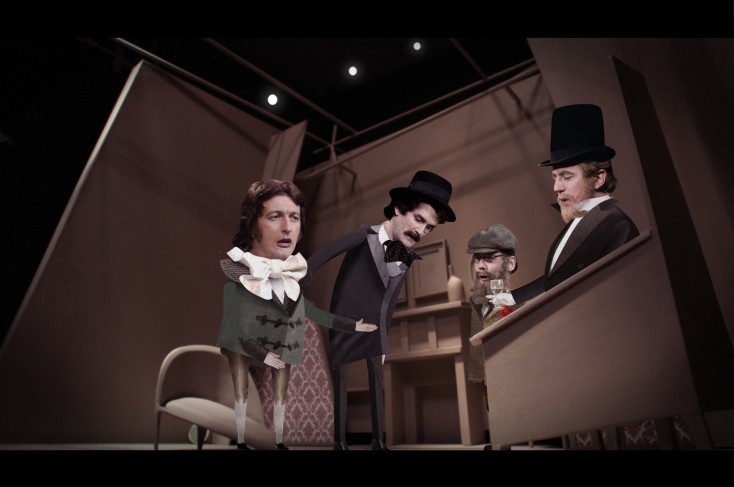By JAMES DAWSON
Front Row Features Film Critic
“A Liar’s Autobiography: The Untrue Story of Monty Python’s Graham Chapman” mixes audio recorded by the late comedian with the voices of other Python members in wildly diverse animated vignettes about Chapman’s life. Also, in a casting choice that seems appropriately surreal, actress Cameron Diaz shows up in a cameo as Sigmund Freud.
Chapman, best known as the frustrated King Arthur in “Monty Python and the Holy Grail” and the mistaken-identity messiah in the troupe’s “Life of Brian,” was a creative genius who also happened to be an insecure, promiscuous and self-destructive alcoholic. His narration and character performances here are taken largely from the audiobook version of his factually suspect memoir, but the film is much more than a respectfully dull Ken Burns-style slideshow.
That’s because directors Bill Jones, Jeff Simpson and Ben Timlett have enlisted more than a dozen animation studios to create stunning segments with techniques ranging from cartoonish to cut-up to computer generated. “A Liar’s Autobiography” shows off so many delightfully different artistic approaches that it’s like an entire animation festival unto itself.
When Chapman recalls an embarrassing live performance of Python’s Oscar Wilde sketch (“Your majesty, you are like a big jam donut with cream on top”), members of the group are portrayed as paper-doll-like figures. Scenes about his childhood, college days, celebrity-stage debauchery and a literal flight of fancy as a spaceman are rendered in a variety of other styles ranging from realistic to fine-artistic to psychedelic.
Some of the bits work better than others, ranging from absurdly dark to naughtily sexual to simply silly. Chapman’s earliest reminiscences about dismembered body parts littering his neighborhood during World War II are echoed later in a similarly black-humorous sketch about a wrestler tearing off his own limbs while fighting himself. Chapman’s recollections about struggling with his sexuality in college—”going to bed with women while dreaming about men”—have an amusing “Ambiguously Gay Duo” explicitness. And the portrayal of Python members as CGI monkeys is just plain goofy.
The film also includes a not-so-funny visualization of the “three days of unpleasantness” DTs that Chapman suffered when he gave up alcohol, after reaching the point where he was drinking four pints of gin a day.
The fact that Pythons John Cleese, Terry Gilliam, Terry Jones and Michael Palin voice characters in various segments makes this the closest thing to a reunion film since the group’s 1983 “The Meaning of Life.” Sixth Python Eric Idle is heard in Python-era songs and sketches, and all of the surviving members are seen in real-life footage from Chapman’s memorial service.
While some segments wander and go on too long, the film includes more than enough of Chapman’s off-kilter wit to keep things entertaining. After acknowledging to himself that he was gay, Chapman says he “became a raging poof, but no mincing. A butch one, with a pipe.” He describes an extremely unlikely occasion when he shared gin with the Queen Mother, who told him he really must see New Zealand. He later confesses to suffering from a name-dropping psychological condition after spending time in Los Angeles.
Chapman died at 48 in 1989, and the film concludes with part of John Cleese’s unexpectedly hilarious eulogy for his former writing partner. For Monty Python fans, this film offers a unique chance to hear a little more from the co-author of the dead parrot sketch, even though he is no more, bereft of life and has joined the choir invisible.
“A Liar’s Autobiography: The Untrue Story of Monty Python’s Graham Chapman” will appear in select theaters and on the EPIX Channel beginning November 2.






